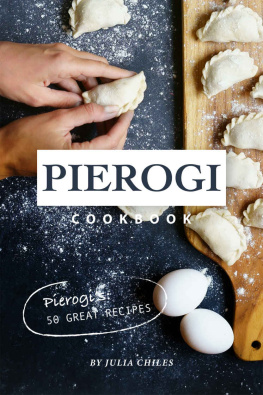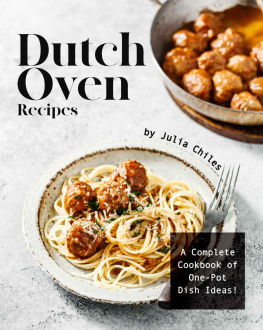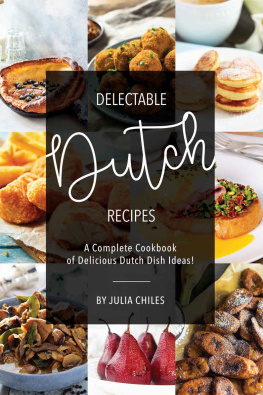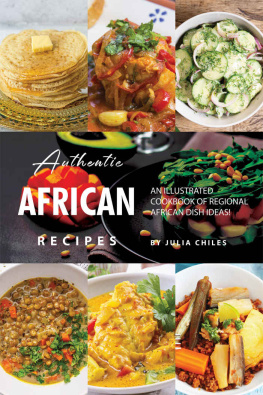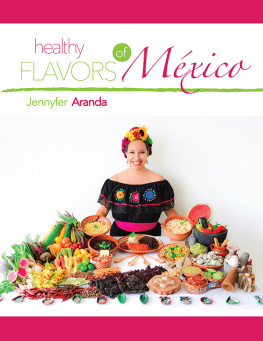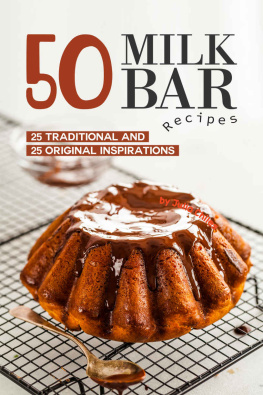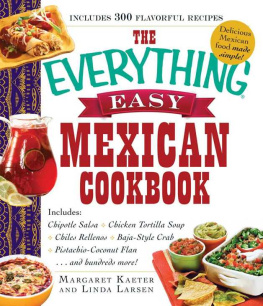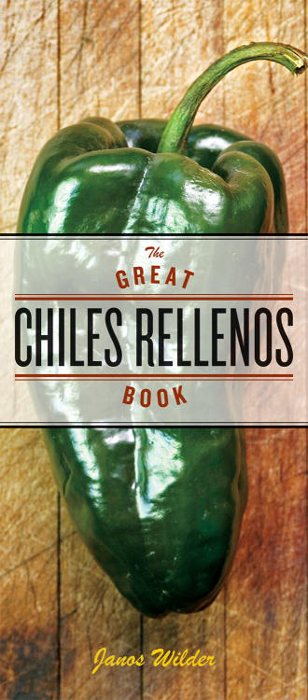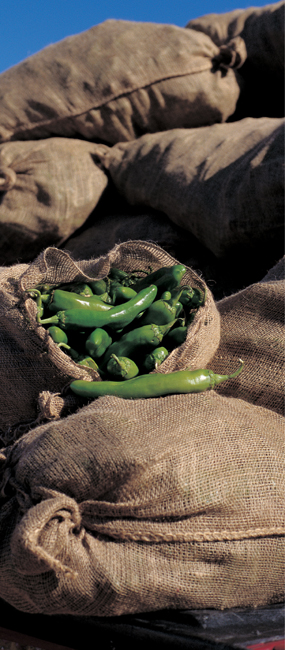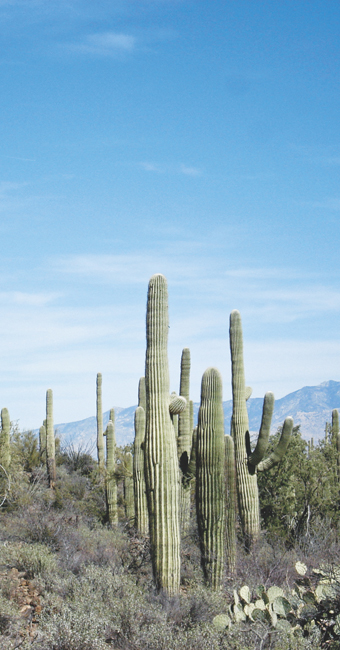Copyright 2008 by Janos Wilder
Photography 2008 by Laurie Smith
Front cover photo 2008 by Ed Anderson
All rights reserved. Published in the United States by Ten Speed Press, an imprint of the Crown Publishing Group, a division of Random House, Inc., New York.
www.crownpublishing.com
www.tenspeed.com
Ten Speed Press and the Ten Speed Press colophon are registered trademarks of Random House, Inc.
Photographs appear courtesy of Rebecca Wilder.
The recipes for are adapted from The Food and Life of Oaxaca: Traditional Recipes from Mexicos Heart by Zarela Martinez with permission of John Wiley & Sons, Inc.
The recipe for is adapted from The Cuisines of Mexico by Diana Kennedy with permission.
Library of Congress Cataloging-in-Publication Data
Wilder, Janos.
The great chiles rellenos book / Janos Wilder; photography by Laurie Smith.
p. cm.
Includes index.
1. Cookery (Hot peppers). 2. Stuffed foods (Cookery). 3. Cookery,
Mexican. I. Title.
TX803.P46W55 2008
641.6384dc22
2007041441
eISBN: 978-0-307-81474-6
Cover design by Ed Anderson
Photography by Laurie Smith
Food styling by Erica McNeish
v3.1
This book is for Rebecca, who encourages and nurtures my dreams with the patience and love that allows me to bring them to life.
Acknowledgments
This book came about thanks to Phil Wood, not only because he published it, but because his remarkable memory of the foods he loves includes the first rellenos I made for him in 1987. When it came time for this book, he thought of that Lobster and Brie Relleno and asked me to write it.
On a project like this, there are plenty of co-conspirators. Much appreciation goes out to mine, including my friends in Tucson and in Gold Hill, Colorado, who probably ate far more rellenos than they wanted during the recipe testing, and especially to Rebecca, who told me she put on 7 pounds while I was cooking for this book.
Veronica, thank you for bringing your enthusiasm, focus, and passion to this project that ended up in your lap at the last minute. Your guidance has helped shape the look and feel of what weve produced. Also many thanks to our photographer, Laurie Smith, who transformed my recipes into the stunning visual images you see here. Much gratitude is also due to our designer, Ed Anderson, who made everything fit beautifully into a challenging format.
My cooking takes place on a continuum of traditions created by great cooks whose purposes were the loftiest: feeding their families and communities. They cooked with love and from necessity and provided a firm base from which I have the luxury to take the culinary flights of fancy that have created this book.
Contents
INTRODUCTION
Why I Make the Rellenos I Make
I SAMPLED MY FIRST RELLENO in 1978 on a courtship trip to Tucson with my wife-to-be, Rebecca. We had met several months earlier in the small mountain town of Gold Hill, Colorado, where she taught kindergarten through second grade in the two-room schoolhouse that served the community of 125 residents. I was chef at the Gold Hill Inn, and Rebecca was waiting tables there over the summer. At the end of the season, she returned to Tucson to be near her family and to reenroll at the University of Arizona with the goal of starting a second career in graphic design. I followedwith the goal of making Rebecca my wife.
Tucson at that time was the self-declared, unofficial Mexican-food capital of the world. So off we went to one of the citys many Mexican restaurants. Rebecca ordered a red chile and bean burrito, one of her favorite dishes to this day. I ordered a chile relleno. It was, well, disappointing. The batter was doughy, thick, and heavy, while the chile itself was thin, torn, and tasteless, and the cheese was processedneed I say more?
The good news is that Rebecca returned with me to Gold Hill where she continued to teach and I continued to cook for a couple of more years. This was followed by a stint in Santa Fe and a wonderful experience cooking in the Bordeaux region of France. In 1983 we were back in Tucson opening our first restaurant, Janos, on the grounds of the Tucson Museum of Art.
Around this time, I was determined to learn about and understand traditional Mexican ingredients and cooking techniques. It was my hope to then apply these insights to the sensibilities I had gained from French culinary philosophy and my experiences working in France.
In order to learn more about the cooking of a region, its important to identify its more significant, iconic dishesdishes that help tell the story of a regions culinary heritage, or cultural culinary icons as I call them. I consider dishes like enchiladas, seviches, chiles rellenos, and tacos in this category because each of them tells me something special about Mexican culture, about how and what people eat, and about how ingredients are used. To fully understand each dish, I desconstruct it into an ideal type. In other words, I want to start with the purest form.
Chiles rellenos, like most Mexican foods, are of the people. Recipes are handed down from generation to generation, and like all great dishes, everyone has an opinion about themthe best ways to make them, whose mother makes them best, or where to get the best one. For relleno purists, some of the recipes in this book may constitute heresy; however, for the more adventurous cook, the recipes will open up new worlds of possibilities.
The word relleno means stuffed, so I started with a stuffed chile. In order to stuff the chile, it first has be peeled and seeded, so I explored the different ways to peel and seed chiles. For a chile to hold its stuffing successfully, the flesh must be firm and intact. That led me to the roasting and peeling techniques I describe here.
If the chile is too spicy, it will overwhelm the flavors in the stuffing and you wont taste them. So I needed to find chiles that had the proper levels of heat. I also needed to obtain chiles that were appropriately sized to hold a sufficient amount of stuffing. In Tucson, the rellenos at that time were filled with cheese, but in Mexico we discovered a variety of meat fillings as well. It would be a while before I found vegetable, fish, and fruit rellenos, but just thinking about the possibilities kept me searching.
Breaking away from the dairy limitations allowed me to explore a whole new world of ingredients and flavors that might or might not be found in more traditional Mexican cooking. In the end, it wasnt enough for me to know how to make a great typical chile rellenoI wanted to know how to make a great relleno, period.
Similarly, I began to experiment with different batters and crusts, sauces, salsas, relishes, and salads that would complement the chiles and fillings I was making. Some were traditional, many were not. This experimentation led to the creation of many of the recipes on my restaurant menus, and Ive added to my repertoire over the years. Many of my favorites are included here.
Ive made thousands of rellenos, and while theyre usually eaten at lunch or dinner, I included a breakfast relleno recipe that incorporates many of my favorite Mexican breakfast foods. Rellenos are traditionally served with side dishes such as beans, guacamole, and salsa. In most restaurants, they are served as combination plates or as entrees.


